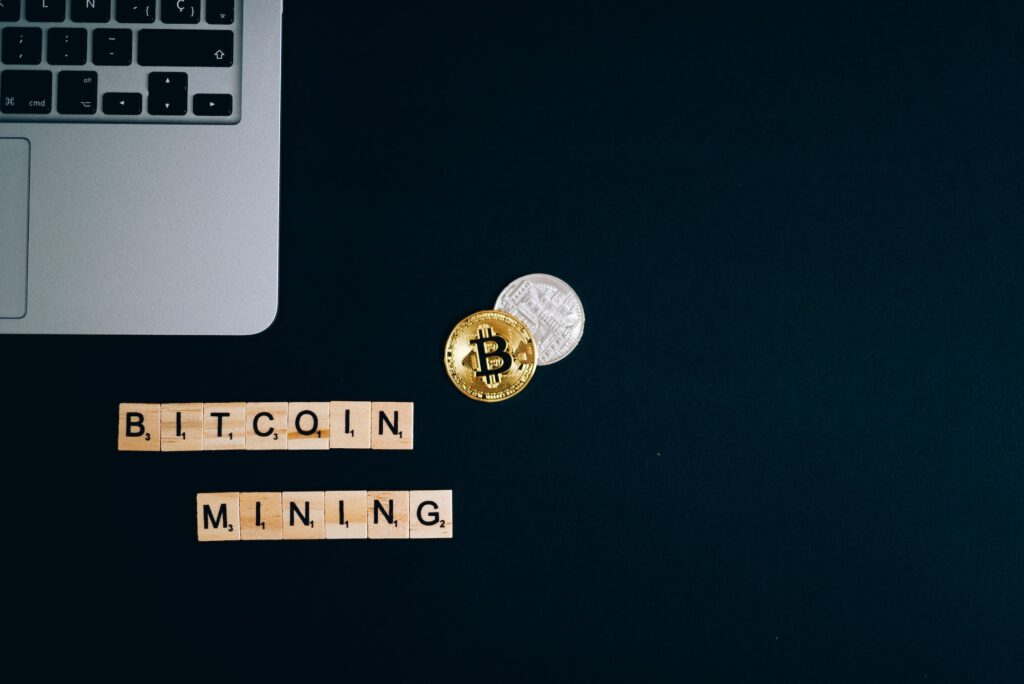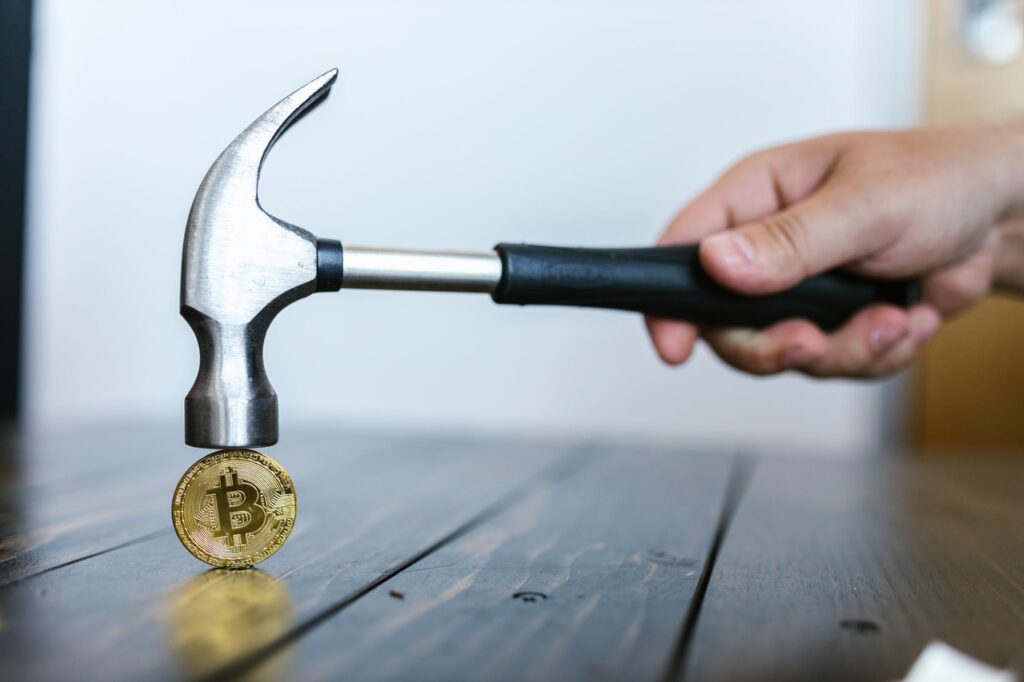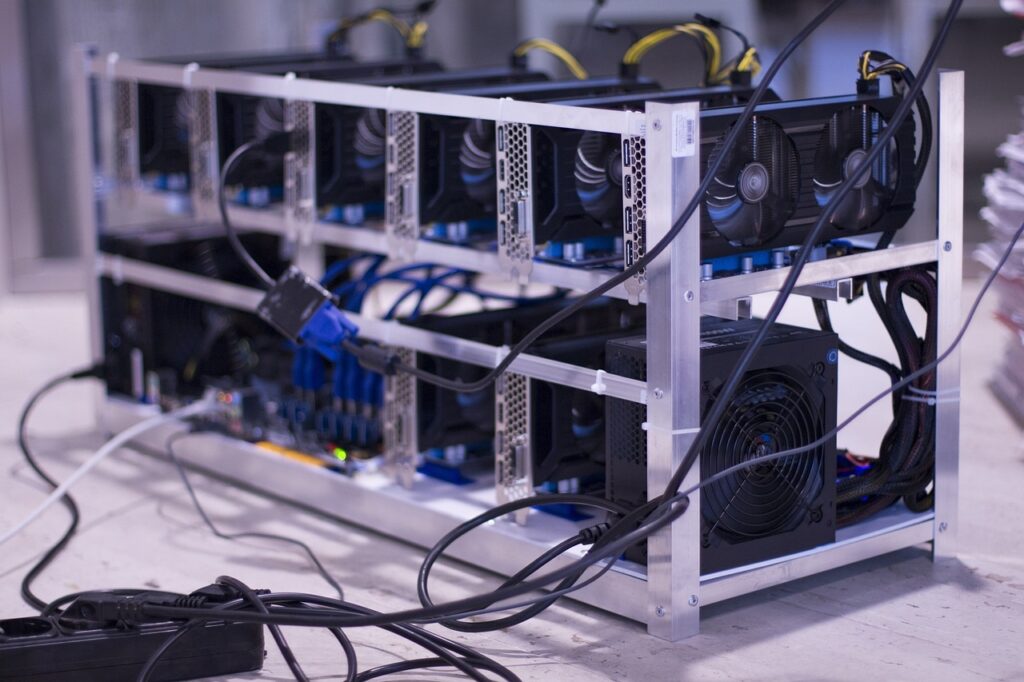What is the Bitcoin security budget, and how does it work?
The possibility of trading with bitcoins is a miracle, isn’t it? Well, not either. We wouldn’t be able to do so if other people weren’t involved in the mining cryptocurrencies on the blockchain network – miners. The real miracle is how the whole process works. In this article, we look closer at what should happen if the blockchain network had been attacked, what this phenomenon is called, and what possible threats should occur.

Firstly, we make it clear how the Bitcoin network works. In the process of mining Bitcoin, people called miners are involved. They are responsible for validating the Bitcoin transactions over the Bitcoin network. Miners supply computing power to the Bitcoin network, and computing power ensures network security. Miners are economically motivated by rewards for delivering power to the computing network.
The rewards are twofold:
- Block rewards are newly mined coins.
- Transaction fees we pay on the network.
The more computing power (hash rate) miners deliver to a computing network, the more difficult it is to take over or attack it. This attack is also called a 51% attack, which means that the attacker-supplied 51% of the computing power to the network and controls more than 50% of the network’s mining hash rate. Miners want to maximize profit at every moment – a miner buys hardware, supplies electricity, and gets a reward. That reward is our security budget. That’s our fee to miners for keeping the network secure.
It is often argued that the security budget of Bitcoin will be solved by increasing the price of Bitcoin. This means miners may receive a smaller percentage of the network capitalization, the ratio may go down, and miners will get the same. This is not the case!

The security budget problem as a path to attack
There are 21,000,000 bitcoins, and there will never be more. Every four years, there is a halving (it cuts in half the rate at which new bitcoins are released into circulation). This means that every four years, we have a different network setup, and every four years, the miner receives less for his initiative of creating new coins and some variable fees.
For example, in November 2022:
– The average fee was 0.50 cents.
– The block size was 1 MB.
– Market cap: $370 billion.
The cost to miners per year was 1.69% of the Bitcoin network’s capitalization.
Now let’s imagine a scenario where all the variables (average fee per transaction, block size, and market cap) remain unchanged, but it won’t be 2022 – it will be 2032. What will change? We will have eight times less network security because of halving.
This means that from a ratio of 1.69%, we will have a 0.2% – we will give this to the miners in the 2032 scenario for securing the network. If we jump to 2036, we are at 0.1%. The argument that Bitcoin is stable and unchanging is not entirely accurate, as the Bitcoin network changes every four years. (because the miners’ incentive changes too). In 10 years, what we give to miners will drop eight times. This will translate into their behavior. And it is at this point that we run into the BTC security budget problem.
Volatility is the risk
What if we want to keep the same security ratio (i.e., the same network security) until 2032?
What needs to be changed? Which parameter? Assuming the block size stays the same (i.e., 1MB) and the market cap does not increase, the fee paid to miners for maintaining the security of the Bitcoin network must change. In this scenario, it would cost $91 per transaction. If the fee is going to be $91, we have to ask the question, who is going to fill the mempool?* Who is going to be willing to pay such a fee?
*Mempool (memory pool) is a smaller database of unconfirmed or pending transactions every node keeps.

We also need to look at the volatility aspect of security. If we now consider that we have a security ratio of 1.68%, most of that is made up of inflation. Transaction fees are now a marginal component. This gives us the security of knowing that the miner knows that in each block, even if there are no transactions, he will at least extract what the remuneration is for the block extraction, which is the main reason why miners are mining at the moment.
If transaction fees are wiped out, that’s not such a change in what the miner gets. When the halving occurs, the block reward will form a little component. The bigger one, in this case, should be transactions. Here we run into another problem. Transactions are unstable. They are abundant in one period and absent in another.
And now comes another important question: How will the extractor behave? Here are the possible scenarios:
1. He will extract and, although the whole process is loss-making for him, or
2. he will not mine – the miner will make a rational (more likely) decision.
Miner quits if he knows that electricity costs will not be covered by what he mines because he knows that the next block does not contain enough transactions. This is economically rational.
In such a case, miners will only be interested in mining sporadically when it is “profitable” for them. Simply put, they will turn the machines on and off occasionally. In that scenario, the network will not be as secure. The Bitcoin network would be more easily attacked by a single entity that would like to take a majority share of it – to have a majority share and control over its operation.

Threats of a 51% attack
What would happen if there was a 51% attack?
There are several ways to profit from such an attack. Equally, there are several responses to this attack. If someone gains 51% control of the network, the question is, what will the miners do?
In the short run, they will turn on their machinery and want to overcome the attack, but in the long run, it will be a loss because if the machinery is on while someone successfully executes a 51% attack, the other side gets nothing.
Another possibility for an attack is that someone would be massively short. There would be small attacks for a short period, during which the attacker would rock prices, resulting in the sale of Bitcoin at a high price and its subsequent purchase at a low price.
Attackers might also be able to prevent new transactions.
The negative consequences of this phenomenon are many. We just named a few.
As you can see, according to BTC.com, the crucial holders of the hash rate on the Bitcoin blockchain are Foundry USA, AntPool, or BinancePool. If they teamed up, they would be capable of taking control of the network together.
Major cryptocurrencies, such as Bitcoin, are unlikely to suffer from 51% attacks due to the prohibitive cost of acquiring that much hashing power. Anyway, it is good to know how it works. For now, it is all.
This article explains how Bitcoin mining works on the Bitcoin network, how miners are rewarded, how the network’s security can be compromised (51% attack), and what possible scenarios could arise. This is a complex issue, and therefore we do not deny that we will continue to address it in the future on our blog.





